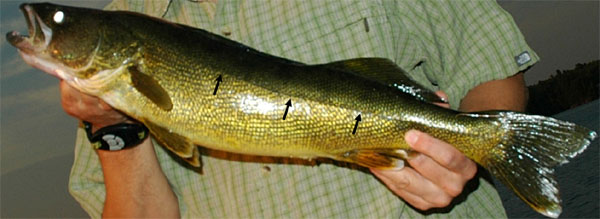When I started researching about hearing in fish I really started to get bogged down in a lot of biology and physics, things like bone conduction, transmission of sound in water and inverse square laws come to mind. After a bit of this I realized that for our purposes as anglers it just wasn’t necessary. Fish can hear very well, big surprise. Some fish will flee at the slightest bump (most clearwater river going trout) and others couldn’t care less (sunfish under a busy dock, fish acclimatized to motor boats on a busy lake). Mostly all we need is some common sense – a little stealth around the water will go a long way, carpet flooring on your boat, use of electric motors etc.
It is also good to know that a fair bit of surface noise (talking, music) will mostly bounce off the air/water interface at the surface of the water while noise from banging on the bottom of the boat, stomping on the shoreline will conduct extremely well into the water. Depth and distance matter, the shallower the fish and the closer you are the quieter you will need to be. Sound, and especially lower-frequency sound, can travel quite far with very little loss of signal.
The right kind of noise can be key to getting a fish to strike. This is where lateral line, a sense unique to fish, comes into play. The lateral line consists of a series of cells (neuromasts, hair cells) in a line along the side of fish. These cells can detect small movements and vibrations in the surrounding water and play an important role in predator response, schooling, and orientation. This predatory response is key for us as anglers, allowing fish to home in on and strike at bait and lures in motion. In many cases the lateral line will be as important or more important than sight for predator species of fish.


